

Who Was Marianne North? Biologist, Painter, and Kew Gardens Contributor
Summary
This article on DesignDash celebrates Marianne North, a Victorian botanist, painter, and significant contributor to Kew Gardens. It outlines her defiance of societal expectations, her global travels to paint plants in their natural habitats, and her lasting legacy through the Marianne North Gallery. North’s work merged art and science, showcasing botanical diversity and promoting conservation.
Reflection Questions
- How do Marianne North’s achievements challenge the traditional roles assigned to women in her era?
- In what ways does North’s work demonstrate the importance of preserving biodiversity?
- How can North’s life inspire current and future generations to pursue their passions despite societal constraints?
Journal Prompt
Reflect on a personal interest or hobby that you’re passionate about. Consider how you could integrate this interest with a broader purpose or cause, similar to how Marianne North combined her love for art and botany to make a significant impact.
Once described by biographer Michelle Payne as an “intrepid painter,” Marianne North was a Victorian adventurer and a visionary botanical artist who married art and science throughout her fascinating life. Born into an era when the roles and ambitions of women were heavily circumscribed, North defied societal expectations to traverse the globe—capturing the world’s flora with her brush and palette.
Her extensive travels across every inhabited continent allowed her to produce a prolific collection of paintings—each a painstaking yet vibrant portrayal of plant life in its natural habitat. North’s dedication to her craft not only enriched the world’s appreciation for botanical beauty but also made significant contributions to scientific knowledge—offering insights into diverse ecosystems during a time of great change. Her legacy as one of the most famous botanical artists in history—now encapsulated at Kew Gardens in the UK—continues to inspire both art enthusiasts and botanical scientists. She is one of few who has so impressively balanced aesthetic beauty and scientific inquiry with unparalleled grace.
Read on to learn more about Marianne North’s life, and don’t forget to check out Michelle Payne’s biography of the botanist and painter.
Opportunities for Women in the Victorian Era
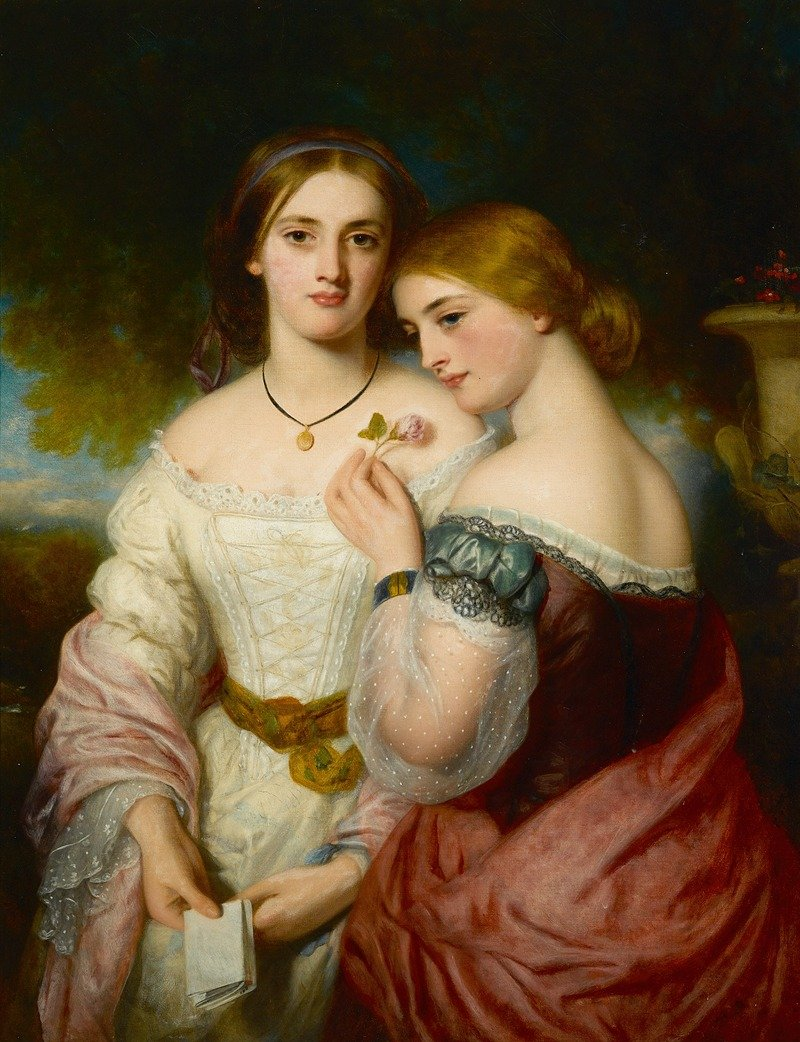

The Victorian era—with strict social norms and clearly demarcated gender roles—presented significant obstacles for women aspiring to make their mark in the arts and sciences. In a society where women’s primary roles were confined to domesticity, pursuing a career or even a serious hobby in these fields was both unconventional and frowned upon.
Opportunities for formal education in the arts and sciences were scarce for women, and professional recognition was even harder to come by. Despite these barriers, some women managed to break through the constraints—often due to a combination of personal tenacity, supportive family networks, and—in certain cases—financial independence.
Marianne North’s achievements in botanical art are all the more remarkable against this backdrop—underscoring not only her extraordinary talent but also her determination to transcend the limitations imposed on women of her era.
Marianne North’s Beginnings as a Victorian Girl with Artistic Ambitions and a Scientific Mind
Marianne North’s story began in Hastings, England where she was born into an intellectually inclined, prosperous land owning family in 1830. The North family was one of both means and minds—providing a fertile ground for Marianne’s burgeoning interests.
Unlike the majority of her contemporaries, Marianne was fortunate to pursue self-education that—while not formal in the sense we understand today—was rich in exposure to the natural sciences and the arts. This was somewhat unconventional for women of her time—who were often relegated to education that prioritized domestic skills over intellectual pursuits.
Her family environment allowed her to readily absorbed the knowledge that would later fuel her passions. However, it was still fairly restrictive and her childhood was not one of adventure and excitement.


are you a fine artist or photographer?
Her Father’s Influence on Early Interests in Plants and Painting
Frederick North—Marianne’s father—was not just a political figure but also an ardent lover of nature. Her father was a member of Parliament and an avid botanist himself, and he greatly influenced her interest in botany and art.
Rather than pressuring her to conform to societal expectations of marriage and domesticity, her father encouraged her intellectual and artistic interests. He played an important role in nurturing Marianne’s early interests. Their home was a haven for intellectual growth where Marianne was encouraged to explore her fascinations with the natural world.
Frederick’s own passion for horticulture and the arts undoubtedly rubbed off on his daughter—setting her on a path that intertwined botany with painting. This blend of interests was somewhat unique and set the stage for Marianne’s future endeavors. Her early forays into painting—initially viewed as a genteel pastime suitable for young ladies of her class—would evolve into a serious pursuit—largely thanks to the supportive environment her father provided.
The Impact of Frederick North’s Death
After her mother died in the 1850s, Marianne began flower painting, but it was not until her father’s death that her life truly changed. The death of Frederick North in 1869 marked a watershed moment in Marianne’s life. Freed from the conventional expectations that bound women to their familial duties, and endowed with the means to chart her own course thanks to her inheritance, Marianne embarked on a journey that was as audacious as it was unprecedented.
She made the decision to travel the globe—an endeavor few women of her time could dream of, let alone undertake. This bold step was not just an escape from the confines of Victorian society but a mission to document the world’s flora through her art.
Her travels—which took her to remote corners of the earth—were fueled by a desire to capture the beauty and diversity of plant life in their natural habitats. This decision set her on a path of exploration and artistic creation that would not only define her legacy but also contribute significantly to the fields of botany and art.
Marianne North’s posthumous journey was not just a personal quest for fulfillment but a pioneering venture that bridged the worlds of science and art in a way that continues to inspire women and all botanists to this day.
Marianne North’s Worldwide Travels
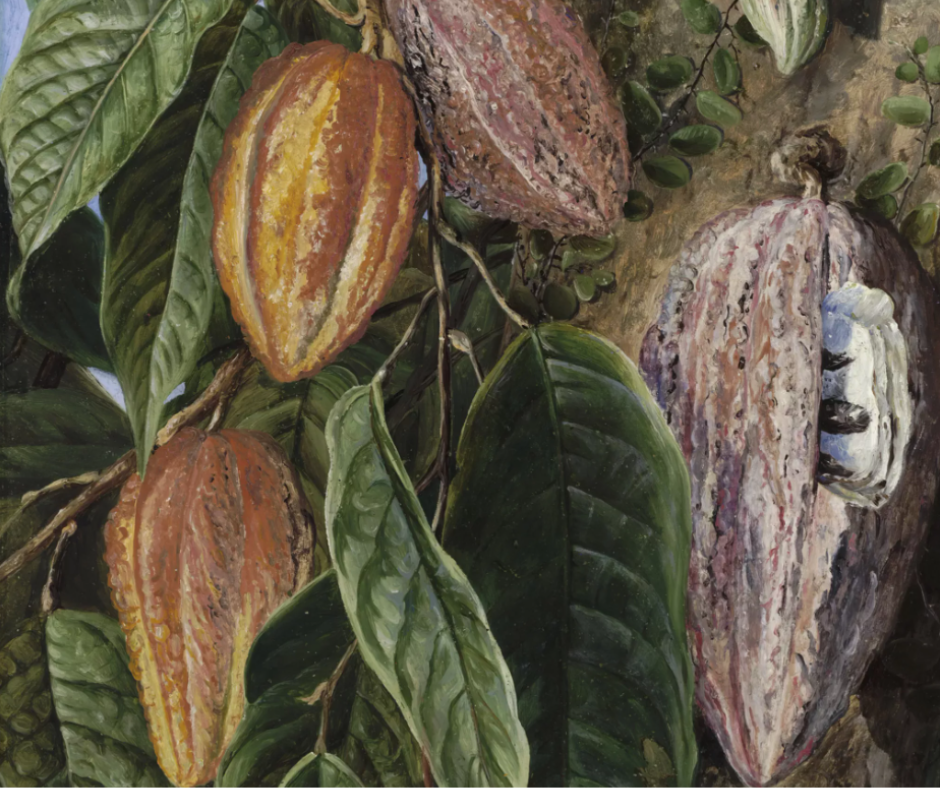

Marianne North’s lifelong adventure began with her first major expedition to Canada and the United States in 1871. This initial expedition set the tone for her unique approach to botanical art—painting plants in their natural habitats. She would later travel to South America,
Her quest for capturing the essence of plant life in its truest form then took her to the lush landscapes of Jamaica and the diverse ecosystems of Brazil. In Jamaica, she was mesmerized by the vibrant colors and intricate forms of tropical plants—a stark contrast to the temperate flora back home. Brazil—with its rich biodiversity—offered her an endless palette of subjects to paint—from the dense rainforests to the rare species of the Amazon.
North’s work from this period not only demonstrates her exceptional talent as an artist but also her keen observational skills—providing a vivid pictorial record of the botanical diversity of the New World.
North’s Journeys Across Asia
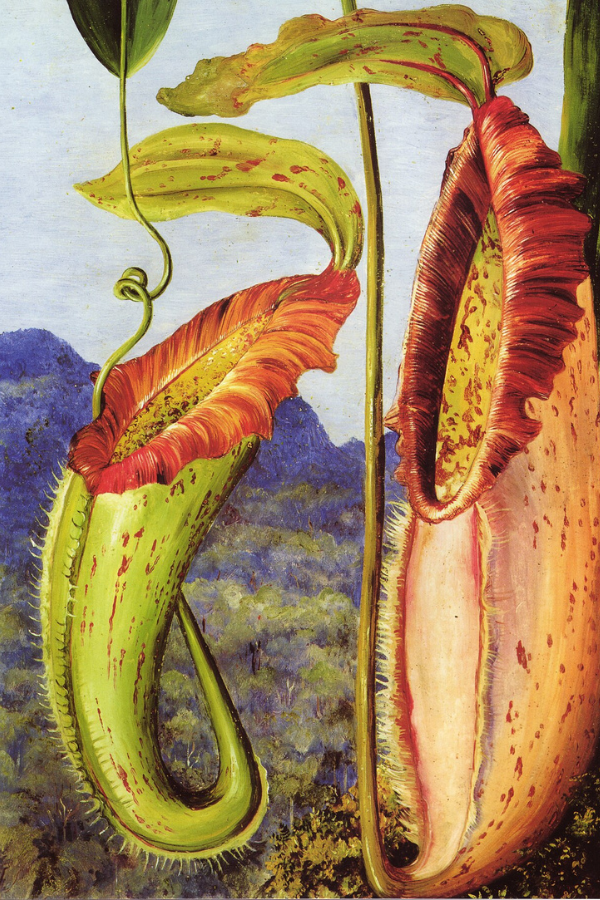

Her travels through Japan, India, and Borneo between 1875 and 1880 offered Marianne North an entirely new canvas. In Japan, she was captivated by the delicate beauty of cherry blossoms and the meticulous arrangement of traditional Japanese gardens. Moving on to India, North undertook a comprehensive documentation of the subcontinent’s flora—from the Himalayan foothills to the tropical gardens of the south. She also painted tea and coffee plants while abroad.
Her time in Borneo introduced her to the dense rainforests and unique species like the carnivorous pitcher plants. North’s paintings from this period not only capture the aesthetic beauty of Asian plants but also serve as a significant botanical record—highlighting species that were little known in Europe at the time.
Trips to Africa and Australia
Africa and Australia were continents that offered Marianne North some of the most challenging yet rewarding experiences of her travels. In Africa, she ventured into South Africa, Seychelles, and Madagascar.
From the baobabs and orchids of Madagascar to the fynbos of South Africa, North’s work from this period provides a rich visual archive of the African continent’s botanical diversity. In Australia, she was fascinated by the eucalyptus and acacia species—documenting the distinctive landscapes and plant life of both the temperate south and the tropical north.
North’s ability to capture the essence of these ecosystems—with their unique adaptations and beauty—underscored her exceptional skill as a botanical artist and her contributions to the scientific understanding of these regions’ plant biodiversity.
Challenges North Faced as a Female Traveler from Victorian England
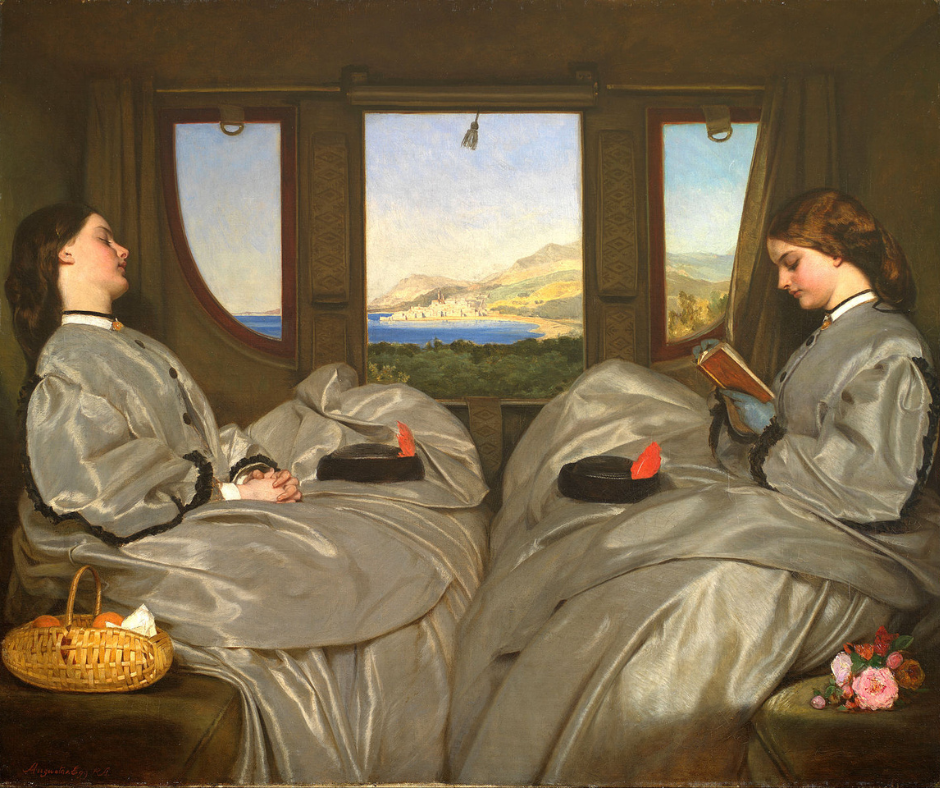

Traveling alone as a woman in the 19th century posed a myriad of challenges, from societal skepticism to the practical dangers of exploring remote regions. Marianne North often faced logistical difficulties—i.e., securing safe transport and finding accommodations in places where a woman traveling alone was a rarity.
There were also health risks associated with the harsh climates and diseases prevalent in tropical regions. While detailed accounts of her specific illnesses are not extensively documented, it is known that traveling in the 19th century exposed North to various health risks—including tropical diseases, poor sanitation, and the general hardships of travel in remote areas.
Fuel your creative fire & be a part of a supportive community that values how you love to live.
subscribe to our newsletter
*please check your Spam folder for the latest DesignDash Magazine issue immediately after subscription


Marianne North also faced significant societal pressures due to the norms and expectations for women during the Victorian era. In the 19th century, women were largely confined to domestic roles, and their participation in the sciences or in adventurous travels was both rare and socially discouraged. Victorian society had strict views on gender roles—with limited opportunities for women to pursue careers—especially in fields considered unsuitable for their gender like exploration or science.
Despite these constraints, North defied societal expectations by embarking on solo travels around the world—a feat virtually unheard of for women at the time. Her decision to travel alone and focus on her art and botanical studies was in itself a rebellion against the norms of her day. She chose not to marry—which was itself a significant deviation from the expected path of women in her social class. Instead, she dedicated her life to her passion for botany and painting.
Exploring Her Artistic Technique and Contribution to Botany
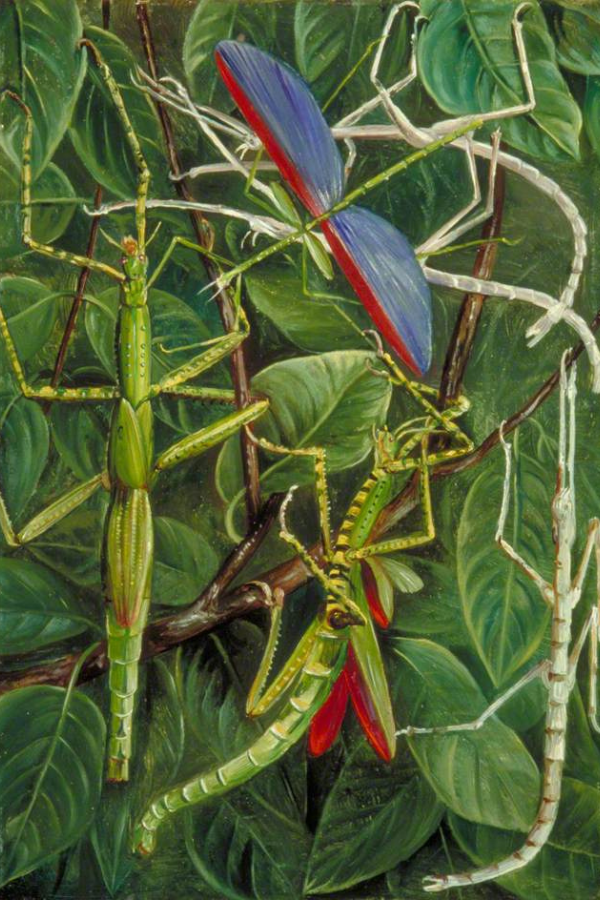

Marianne North’s artistic style is celebrated for its vibrant colors and meticulous attention to botanical detail—setting her apart as a pioneering figure in botanical illustration. Unlike many of her contemporaries who might have focused on individual specimens in isolation, North’s approach was holistic. She painted plants within their natural settings—capturing not only the flora but also providing a glimpse into their ecological contexts.
Her technique was characterized by an almost photographic accuracy—combined with a rich, vivid palette that brought the exotic landscapes and plants she depicted to life. This combination of scientific accuracy and artistic flair made her work not only beautiful but also valuable for scientific study. North’s ability to render the intricate details of plant structures—ranging from the texture of leaves and petals to the precise colors of their habitats—contributed significantly to the visual appeal and educational value of her paintings.
The Scientific Importance of Her Work
At a time when photography was not yet widely used for scientific documentation, her paintings served as an invaluable record of plant species and ecosystems—some of which have since undergone significant changes or even disappeared. Her extensive travels and the vast number of species she documented played a crucial role in the field of botany—particularly in the identification and classification of plants.
By capturing species that were then unknown or little known to science, North’s work provided botanists and researchers with detailed visual references that were essential for the study and conservation of plant biodiversity. Her contributions enriched botanical science by offering insights into the distribution and diversity of plant life across different regions of the world—thereby aiding in the understanding of global biodiversity.
Painting In Situ
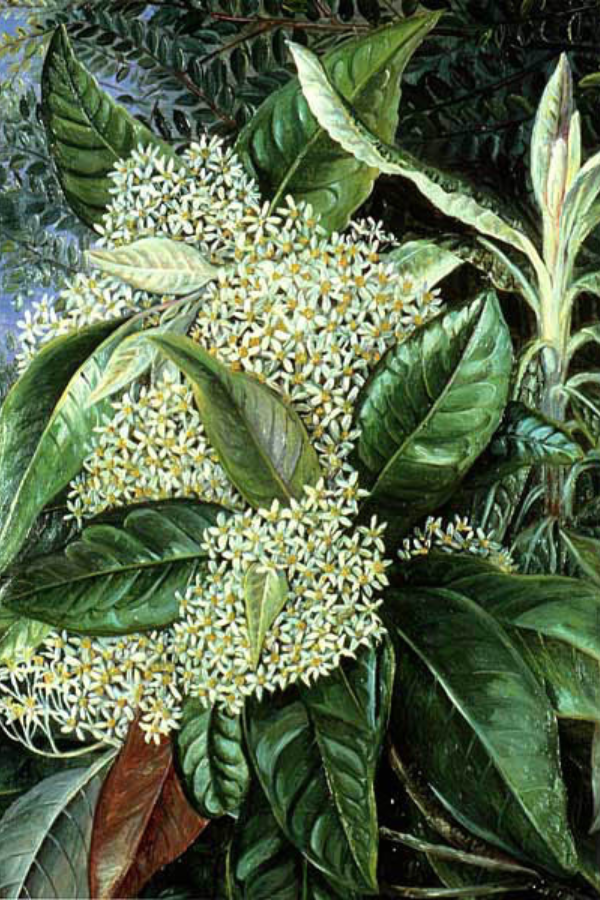

As noted above, one of the most distinctive aspects of Marianne North’s methodology was her insistence on painting in situ, or on-site, within the natural habitats of her subjects. This approach was relatively rare at the time and highlighted her commitment to authenticity and scientific accuracy.
By choosing to paint plants where they grew, North was able to capture not only the specimens themselves but also their ecological contexts—information that is crucial for understanding a species’ growth conditions and interactions with its environment. This method allowed her to observe and document the natural arrangement and behaviors of plants in ways that studio work could never replicate.
The environments—from the dense rainforests of Brazil to the arid landscapes of Australia—were as much a part of her compositions as the plants themselves, providing a comprehensive view of the world’s botanical diversity. North’s in situ paintings are a testament to her pioneering spirit and dedication—offering a unique blend of art and science that continues to inspire and inform.
Her Role in Establishing the Marianne North Gallery at Kew Gardens
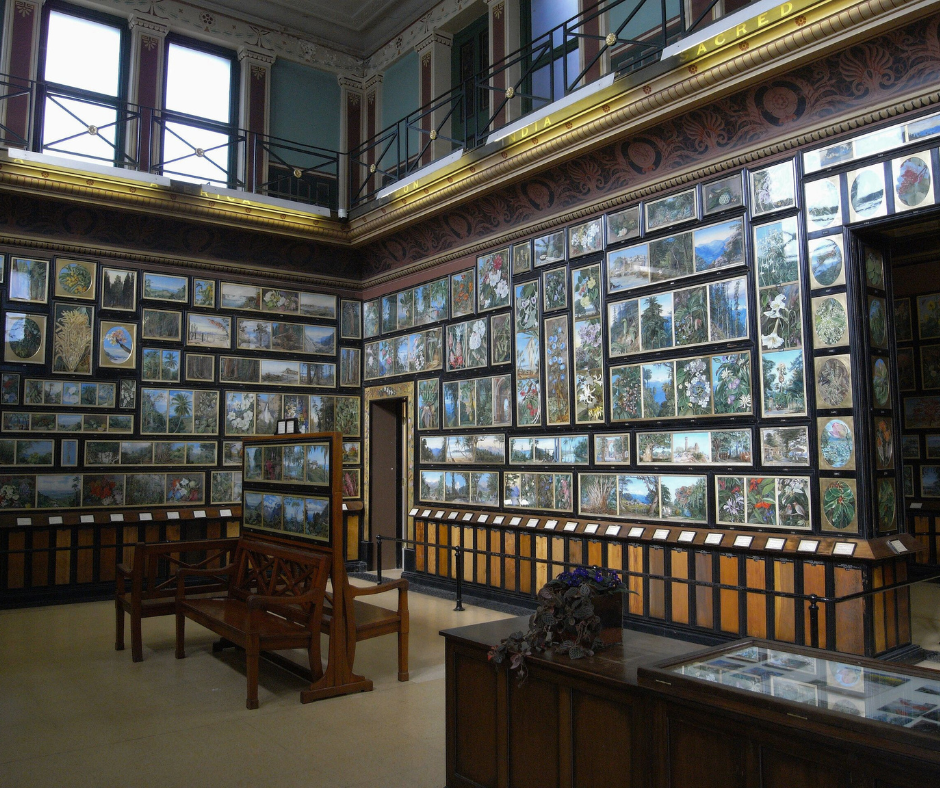

The Marianne North Gallery at Kew Gardens stands as a lasting tribute to her life and work. Filled with her plant and landscape paintings, it is also the only permanent solo exhibition by a female artist in the UK. Established at her own expense and opened in 1882, the gallery was designed according to North’s specific vision to display her vast collection of botanical paintings.
She personally supervised the gallery’s construction and the arrangement of her works within it, ensuring that her collection would be shared with the public. The gallery is a unique architectural and historical feature of Kew Gardens, housing over 800 of her paintings that span every continent except Antarctica. This remarkable collection is displayed in a Victorian-era setting, with dense, floor-to-ceiling arrangements of paintings that immerse visitors in the rich tapestry of the world’s flora as seen through North’s eyes. The gallery not only showcases her artistic talent but also her incredible contribution to botanical science and exploration.
The Marianne North Gallery is a vital historical record of global biodiversity in the late 19th century—offering a window into ecosystems as they existed over a century ago. At a time when photography was not yet widely available, North’s paintings provided a visual database of plant species—many of which were unknown to the Western world at the time.
Her work encompasses a wide range of flora from the most remote and exotic locations on Earth—some of which have since changed drastically or disappeared. The gallery’s comprehensive collection is of immense scientific and historical importance—offering insights into the distribution and appearance of plant species before the widespread impact of industrialization and modern development.
The Gallery’s Role in Education and Conservation Efforts Today
Today, the Marianne North Gallery continues to play a significant role in education and conservation efforts. It serves as an inspirational educational resource—introducing visitors to the importance of plant diversity and the need for conservation. Through North’s paintings, the gallery educates the public about the beauty and importance of plants to the world’s ecosystems—highlighting species that are now endangered or extinct.
It also underscores the role of botanical art in scientific documentation and conservation—demonstrating how art can convey complex scientific concepts and foster a deeper appreciation for nature. The gallery’s ongoing conservation and restoration efforts ensure that North’s legacy endures—making her work accessible to future generations and supporting Kew Gardens’ broader mission of plant conservation and education.
By bridging art and science, the gallery not only celebrates Marianne North’s remarkable contributions but also continues to inspire awareness and action for the preservation of global biodiversity.
Marianne North’s Incredible Legacy as a Scientist, Artist, and Adventurer
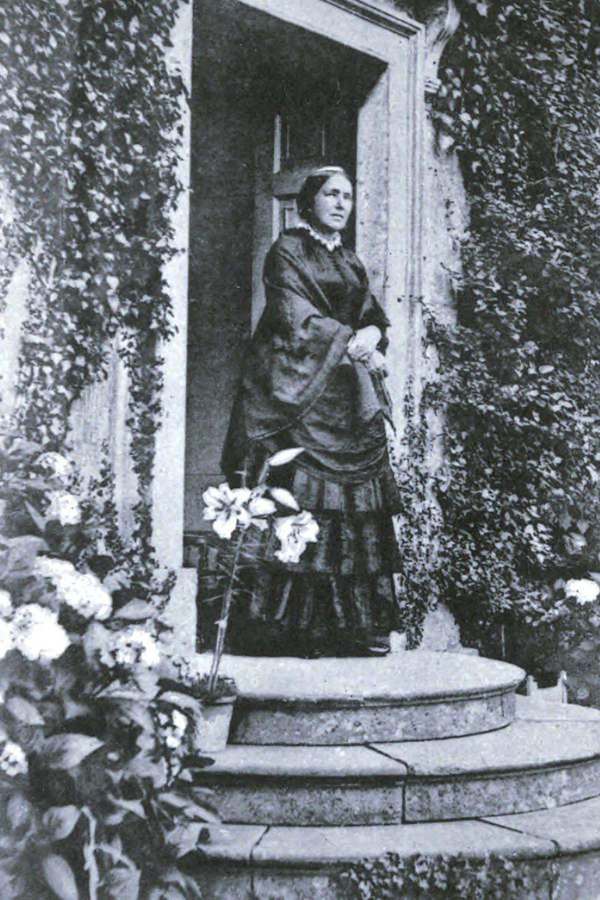

Marianne North’s paintings serve as a vital historical record of plant species and ecosystems from a world that has since seen dramatic changes. These works continue to be a source of inspiration and a reference point for botanists and ecological researchers—offering insights into species diversity and distribution from the 19th century.
In art, North transcended the traditional boundaries that confined women of her era—combining her scientific curiosity with artistic prowess to create a body of work that is both aesthetically captivating and scientifically invaluable. Her approach to botanical art—painting plants in situ within their natural habitats—was pioneering. She blended detailed realism with vibrant expression in a way that continues to inspire artists and illustrators today.
North’s impact extends beyond her contributions to botany and art. Her life story is a testament to what women can achieve despite societal constraints—making her a role model for women in science, exploration, and the arts. Her determination to travel the world alone—at a time when such endeavors were almost exclusively male—challenges traditional narratives about the roles and capabilities of women—offering encouragement to those who wish to forge their own paths.
To learn more about Marianne North’s incredible life, check out the following resources.
A Vision of Eden: The Life and Work of Marianne North: This book compiles North’s own writings from her travels, along with a selection of her paintings. It provides insight into her experiences and observations as she traveled the world.
Marianne North: A Very Intrepid Painter: Michelle Payne’s biography of North offers a detailed look at North’s life, from her upbringing in England to her extensive travels and the legacy of her artwork. It delves into her motivations, the challenges she faced, and her contributions to botany and art.
Remarkable Plants That Shape Our World: While not solely about Marianne North, this book from the Royal Botanic Gardens, Kew, features some of North’s work and discusses the importance of plants to human culture, including those she documented.
Fearless World Traveler: Adventures of Marianne North, Botanical Artist: This beautiful book written by Laurie Lawlor and illustrated by Becca Stadtlander traces the wild and wonderful life of Marianne North. It’s perfect for kids who are just dipping their toes into botany, biology, art, and adventuring.
Design Dash
Join us in designing a life you love.
-
Why Interior Designers Should Consider an Online Color Theory Class
Read on to learn more about this discipline and for a short list of our favorite online color theory classes to get you started.
-
How to Avoid Overpaying Estimated Taxes as a Firm Owner
Most firm owners must submit quarterly estimated tax payments based on their AGI. Here’s how to avoid overpaying estimated taxes as a design business owner.
-
Make It a Habit: The Key to Keeping New Year’s Resolutions
Behavioral scientists often argue that the key to the persistence and success of New Year’s resolutions lies in habit formation psychology.
-
Get to Know the DesignDash Team Through a Q&A at Our 2024 Holiday Party!
From favorite traditions to proudest moments, get to know the team and what inspires them for the new year by reading our 2024 holiday Q&A!
-
Your Digital Footprint: Why Entrepreneurs Need to Think Beyond Social Media
Social media is great for today, but creative entrepreneurs need a lasting online presence. Learn how to expand your digital footprint with websites, newsletters, and features that showcase your work for years to come.
-
Winter Capsule Wardrobe: Staying Stylish This Season with Just 10 Pieces
Simplify your mornings and elevate your style with our guide to creating a winter capsule wardrobe!








